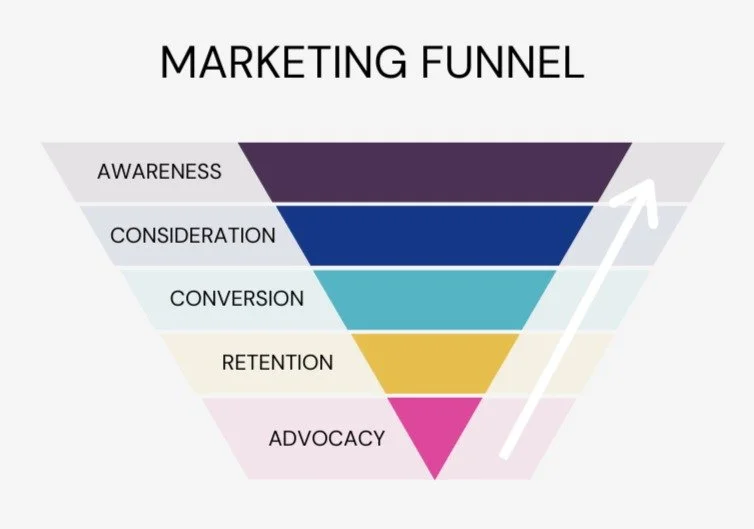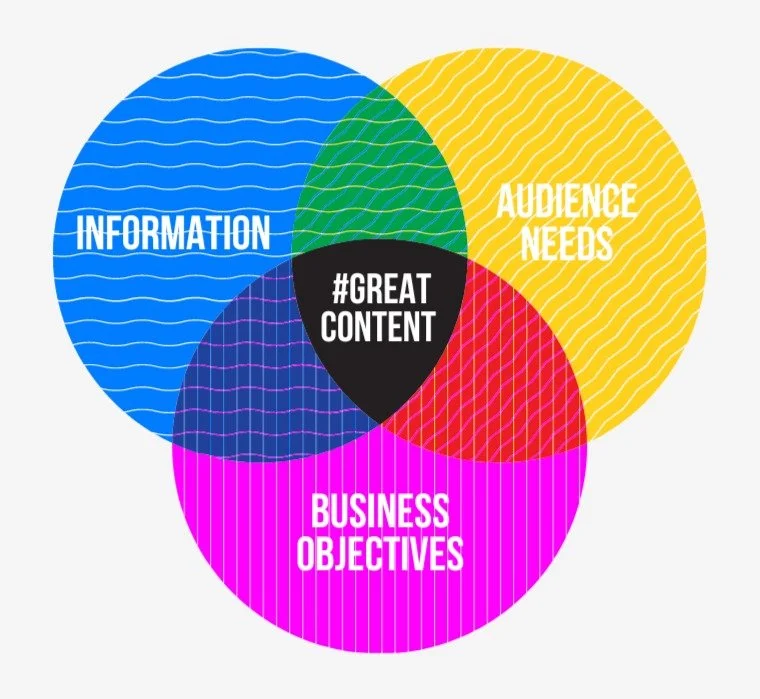Great content isn’t built in a day
Great content takes time.
And nowadays, in a time when resources are constrained, communicators need to maximise the value they get out of every piece of content.
Strategy-led
To do that you must start with – and be guided by – a robust strategy. Content can only be great if it’s fulfilling your organisation’s objectives.
Let's take a look at my old student and staff communication team at the University of Technology Sydney for an example. We only created content that:
grew our brand and reputation through owned media (e.g. website, digital screens and social media) and staff, student, alumni and industry advocacy (word of mouth);
engaged with our audiences to contribute to a positive experience with UTS; or
motivated prospective students to undertake study and research at UTS.
Applied in the context of the marketing funnel, positive experience drives user/customer/potential customer engagement and retention (at the bottom of the funnel), while advocacy (word of mouth) feeds in throughout the funnel supporting awareness, consideration and conversion. With research from Roy Morgan showing that “over 91% of Australians aged 14+ have either sought advice from, or been the source of advice for their friends or family…” word of mouth is still the best form of advertising.
Driven by audience insight
But, content can’t just be about what the organisation wants. At the heart of every piece of content has to be your audience’s needs – it needs to inspire, engage or solve a problem for them (if not all three). Only then will you get the engagement, attention, sign-ups, behaviour change and ROI your organisation desires.
Luckily, we live in a world full of data and information that can be used to help you create the right content for your audience. We’re also able to be publishers of our own content and to connect with our audiences in a very targeted way compared to using the ‘all things to all people’ model of traditional advertising (like bus shelters and the back of taxis) and media (though these both still play a role).
Created with skill
Don’t be fooled though, corporate journalism (aka telling your own stories to your internal and external stakeholders through your own channels) still requires the skill and effort drawing on research and interviews; persuasive writing and, of course, necessary fact-checking. It also requires applying a journalistic mindset to your content by shifting from self-promotion to stories of value and newsworthiness to your audience.
Getting the most out of every story (aka content atomisation)
It’s not good enough to simply write a story and publish it on your website. To deliver value, you must be able to tell an engaging and inspiring story across a growing range of channels.
Traditionally, organisations would spend time interviewing talent, pulling quotes and facts together and issuing a media release. And, if they’d done a good job they would get space in the newspaper or on TV. They would also pay money for advertising across a number of channels.
Now though, clever organisations are making that single piece of content work harder – it's written once, but used many times. They're getting better value out of the effort of interviewing and creating the original content by first writing a compelling piece of content and then breaking it down across a multitude of channels, with specific audiences and content objectives in mind.
How to atomise with purpose
At its heart, content atomisation, is simply repurposing that ‘big rock’ piece of content into smaller parts across multiple channels and targeting different audiences to amplify its effect to ensure you get good value for the effort you’ve put in.
One story can be stretched across earned, paid and owned media. Done well, each atomisation should be tailored for the audience and the channel it’s seen on. To do this properly your content atomisation should be planned upfront during the content creation period rather than as an afterthought.
Piggybacking on trending news topics to get yourself noticed
With well-planned content and an eye on the news, you can also ensure another bite of the cherry by newsjacking. It’s the process of adding your organisation’s thoughts, content and opinions into breaking news stories or trends. By aligning yourself with popular topics you attract more attention to your business organically and can boost SEO by bringing even more keywords and phrases to the party.
Not all content is created equal – avoid cutting & pasting
That said, the same content doesn’t always work on different channels, because most channels have different audiences, features and engagement objectives.
For example, a media release uses the inverted pyramid technique which puts the who, where, what, and why right up the top to grab a busy journalist’s attention and convince them the story is worthy of their time.
But, that technique isn’t very satisfying or inspiring to a member of the general public (especially Gen Z’ers). So, if you want to share the same story on your organisation’s news site with the general public in mind you need to tell a story that:
engages the reader’s five senses by showing not telling
grabs their attention, draws them in and compels them to keep reading, and
has a powerful call to action or objective in mind.
It’s kind of like the difference between an energy bar, which jam packs everything you need in an efficiently delivered meal, and a degustation menu prepared by a chef to keep you guessing, delighted and satisfied throughout a sustained experience.
Similarly, what works on Facebook doesn’t necessarily work on Instagram.
So, when tailoring your content for different channels remember to consider each platform’s:
limitations and strengths;
audience/s and the tone that will best engage them; and
data – and what it tells you about the content that does and doesn’t work well.
Being thoughtful & achieving economies of scale
Creating content without strategy is a waste of everyone’s time. Start working smarter (not harder) by taking time to plan carefully first to maximise the value and exposure your organisation gets out of every piece of content.
We’re expert storytellers, skilled at finding and telling compelling narratives to inspire your audiences and form positive relationships with your brand. From content strategy to design, we can help you create content that connects.




